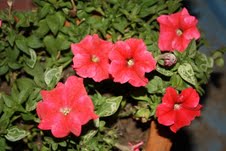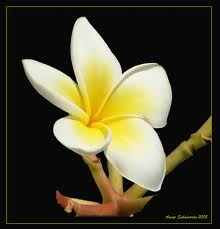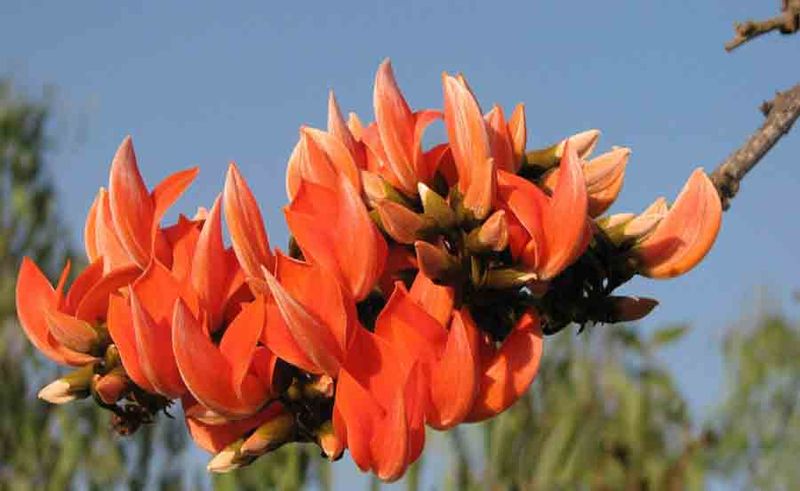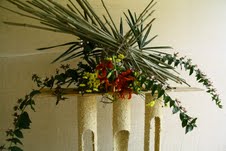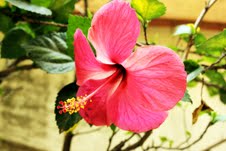Contribute
| Garden Katha - Spring Has Arrived |
Sreemoti Mukerjee-Roy
03/24/2013
Garden Katha – Spring Break I went to Kolkata for two weeks last month. Leaving Boston after a blizzard that brought the East Coast to a grinding halt, it was my spring break. The Kolkata winter was still lingering, although one could definitely feel that spring was on its way in. For once I enjoyed the warmth of a shawl while sipping my early morning coffee in the February sun and feasting my eyes on the trees and flowers that dotted the urban landscape. Post-dawn Kolkata in the spring has a unique charm. Suspended between dawn and day, the angular brick and mortar structures of the city seem softened, full of sepia tones, the flowering trees and the potted plants on balconies standing in elegant relief. Deprived of garden plots or even much open green space, Calcuttans still love their flowers. At no other time is this more on display than during the mild winter months. Hemmed by concrete and months of oppressive heat and humidity, December to February offers all a welcome break for all, nature included. The city re-kindles its love affair with flowers. Potted plants abound wherever there is space be it the wide expanse of a terrace, a sliver of a balcony or two steps in front of a crumbling house. Even health centers and medical facilities have a flower or two at their gates. On my site-visit to Susrut Eye Foundation and Research Center, I could not help but notice the colorful plants and flowers at the entrance! http://visionaid.org/index. Chrysanthemums, dahlias, roses, gladiolas, daisies, marigolds abound. So do the hibiscus. The perimeter of our high-rise is dotted with young white and red hibiscus plants growing in wild profusion, interspersed with giant ti plants. The street across sported red oleanders or Raktakarbi, also the name of a famous play by Rabindranth Tagore. The house next door had a plumeria or champa as it is popularly called in Bengal, in full bloom. My cousin grows kalanchoe on his window sill which never fail to bloom. The Calcutta Annual Flower Show hosted every year by the Agri Horticultural Society of India (AHSI) founded by William Cary in 1820 continues its tradition every winter-spring. This iconic Kolkata event is a cascade of gorgeous specimens of natural and naturalized specimens spread over 22 acres of garden. It draws competitors and visitors from all over the world. The scale is mammoth by the city’s standards. This year alone, 600 varieties of roses were on show. It is somewhat like our Boston Flower Show only this outdoors. In the midst of this spring like aura snow covered Boston seemed remote, as if a memory from another life. The city has grown haphazardly. So has its relationship with its greens and its florals. The planned verdant pastures aka the Kolkata Maidan, a large green expanse in the heart of the city developed during the British Raj, still survives and continues to be a source of pride for the Calcuttan. So do the lush lawns of the Victoria Memorial and Fort Williams along the banks of the Ganges. Padmapukur or the Pond of Lillies once filled with blooming lotus flowers in the midst of a busy thoroughfare Lansdowne Road, is now just a tank of water. The Lillypool garden with its umpteen varieties of cannas and lilies has all but disappeared. So have the Gulmohor and Peepul trees that once lined the residential streets. Kolkata’s growing millions and construction continue to compete with whatever remaining verdant spots that exist. Environmentalists push back with gusto on this seeming encroachment. City elders ritualistically plant a few saplings every year – their effort at greening cannot be denied, however sporadic it maybe. As the famous Bengali poet Subhash Mukhopadhyay once wrote -whether the flower blooms or not it is still spring. Spring arrives in Kolkata every year, maybe a little more meager as time goes by, but it is always a welcome break. ------------------------------------------------------------------ Sreemoti Mukerjee Roy writes from her home in Lexington,MA
You may also access this article through our web-site http://www.lokvani.com/
